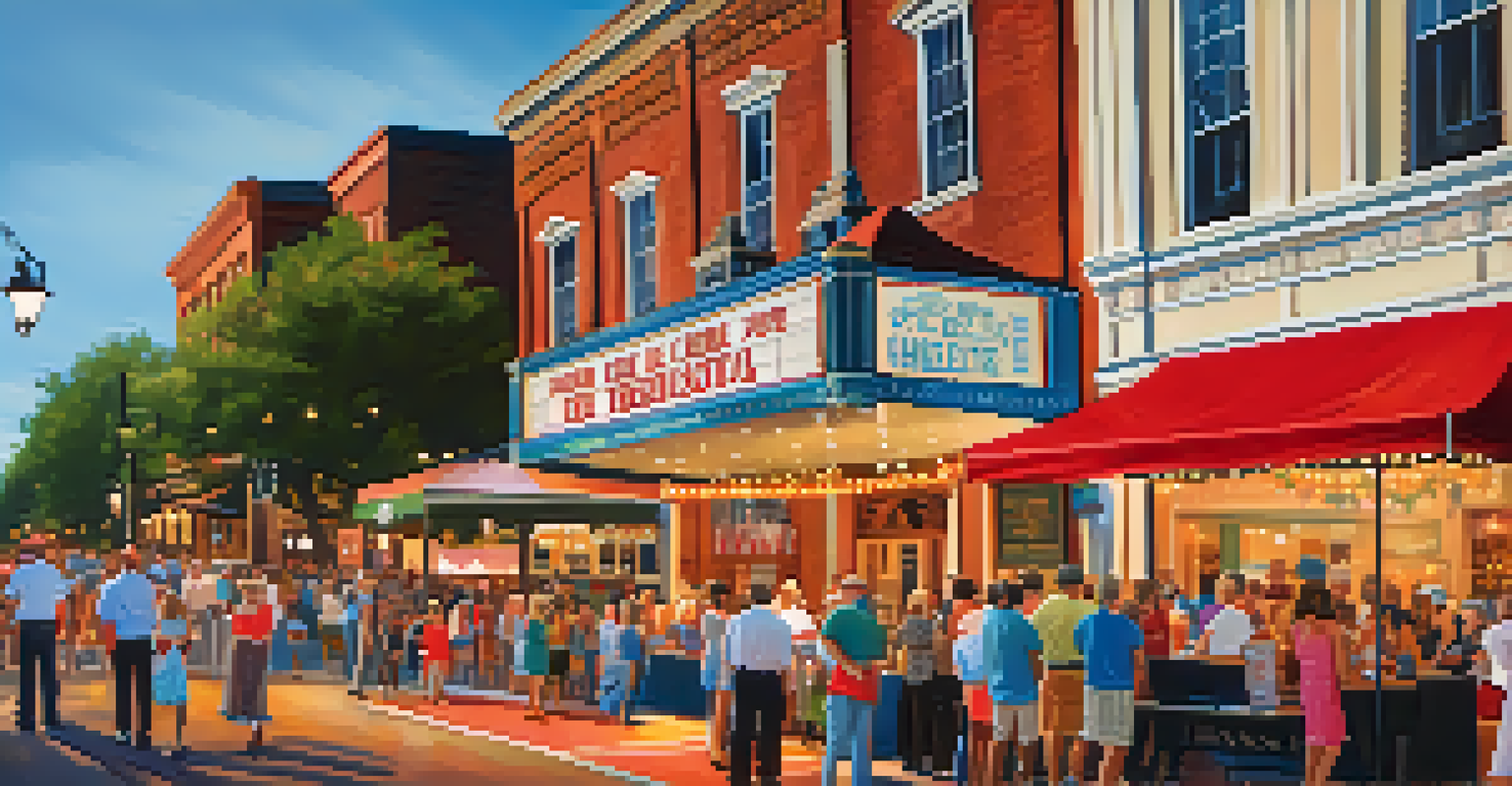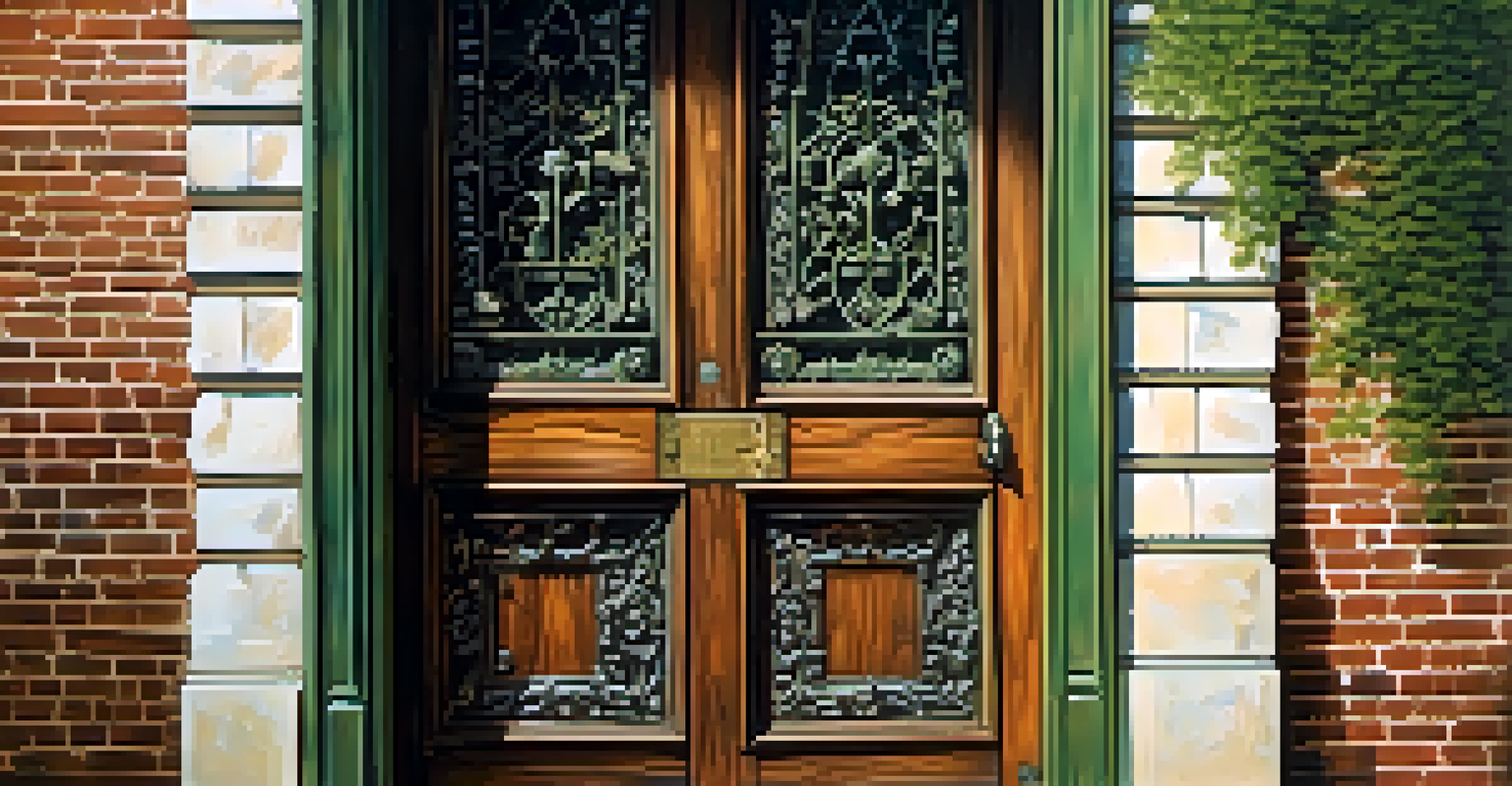Challenges Facing Historic Preservation in Charlotte Today

Rapid Urban Development Threatens Historic Sites
Charlotte's skyline is changing rapidly, with new skyscrapers and developments springing up at an astonishing rate. This urban expansion often comes at the expense of historic sites that add character to the city. As developers seek to maximize space and profits, many older buildings face demolition or neglect, leading to a loss of cultural heritage.
Preservation is a form of courage; it shows that we believe our past has value and can help shape our future.
Consider the old textile mills, once the backbone of Charlotte's economy, that are now often overlooked in favor of modern construction. These sites tell the story of the city's industrial past, yet they are frequently seen as obstacles to progress. As a result, the challenge lies in finding a balance between growth and preservation, a task that requires careful consideration and community involvement.
Without proactive measures and community advocacy, the rich history that defines Charlotte could be erased in the name of progress. This dilemma calls for a collaborative approach, where both developers and preservationists can work together to find innovative solutions that respect the past while accommodating the future.
Lack of Funding for Preservation Efforts
Funding is a significant hurdle for historic preservation in Charlotte. Many preservation projects rely on grants, donations, or government support, which can be inconsistent and difficult to secure. This financial uncertainty often leads to delays or even cancellations of projects that aim to restore and maintain historic sites.

For instance, organizations dedicated to preserving Charlotte's history may find themselves competing for limited resources against other community initiatives. This competition can dilute the focus on preservation efforts, leaving many historic buildings in a state of disrepair. The struggle for funding emphasizes the need for a dedicated strategy that prioritizes the preservation of Charlotte's heritage as a vital part of its identity.
Urban Growth vs. Historic Preservation
Charlotte's rapid urban development threatens its historic sites, necessitating a balance between progress and preservation.
Moreover, public awareness about the importance of funding historic preservation campaigns is crucial. Engaging the community and showing them the value of preserving their local history can lead to increased donations and support, turning the tide in favor of preservation efforts.
Changing Demographics and Community Values
Charlotte's demographics are shifting rapidly, with new residents bringing diverse cultures and values. While this change enriches the community, it also presents challenges for historic preservation. New residents may not have the same connection to historical sites, leading to a lack of support for preservation initiatives.
History is not a burden on the memory but an illumination of the soul.
Imagine a historic neighborhood that once thrived with local businesses and community gatherings. As newer residents move in, the demand for modern amenities and developments can overshadow the area's historical significance. This shift can create tension between long-time residents who value history and newcomers who prioritize contemporary living.
To bridge this gap, preservationists must find ways to communicate the importance of historic sites to all community members. Initiatives like community events, educational programs, and collaboration with local businesses can help foster a shared appreciation for Charlotte's rich heritage, ensuring that preservation efforts resonate with everyone.
Inadequate Legal Protections for Historic Sites
While Charlotte has some regulations protecting historic sites, these laws can be insufficient. Many buildings lack formal designations that would safeguard them from demolition or alteration. This legal loophole makes it easier for developers to bypass preservation efforts, putting more sites at risk.
Take the example of a beloved historic theater that has fallen into disrepair. Without strong legal protections, its fate could be determined by the highest bidder, rather than its historical value. Strengthening preservation laws and expanding the list of protected sites is essential to ensure that these treasures are not lost forever.
Funding Challenges for Preservation
Inconsistent funding hampers historic preservation projects in Charlotte, highlighting the need for a dedicated strategy to secure resources.
Moreover, advocating for better legal protections requires a united front from the community. Engaging local leaders, historians, and residents in discussions about the importance of preserving Charlotte's history can create a push for stronger regulations that reflect the city's values.
Balancing Modern Needs with Historical Integrity
Preserving historic sites often involves navigating the tricky terrain between modern needs and maintaining historical integrity. As cities evolve, there is a growing demand for amenities and infrastructure that cater to contemporary lifestyles. This pressure can lead to modifications that compromise the authenticity of historic buildings.
For example, retrofitting an old church to accommodate a new community center might involve changes that alter its original character. The challenge lies in finding solutions that meet modern needs without sacrificing the unique heritage that defines Charlotte. Innovative design strategies that honor the past while embracing the future can bridge this gap.
Collaboration between architects, developers, and preservationists is key to achieving this balance. By prioritizing adaptive reuse—where old structures are repurposed for new functions—Charlotte can preserve its history while ensuring that these sites remain relevant and useful in today's world.
Public Awareness and Engagement in Preservation
Public awareness plays a crucial role in historic preservation efforts. Many residents may not fully understand the value of preserving historical sites, leading to apathy towards preservation initiatives. Raising awareness about the significance of these sites can inspire community members to get involved and advocate for their protection.
Consider hosting workshops, tours, and events that highlight the stories behind historic buildings. These initiatives can engage residents, fostering a sense of pride in their local history. When people see the value in their heritage, they are more likely to support preservation efforts and actively participate in community discussions.
Community Engagement is Essential
Increasing public awareness and involvement is crucial for fostering appreciation and support for Charlotte's historic sites.
Moreover, social media can be a powerful tool for spreading awareness. By sharing success stories, historical facts, and upcoming preservation events, advocates can reach a broader audience and encourage more individuals to join the cause. Building a passionate community around preservation can lead to lasting change in Charlotte.
The Role of Technology in Preservation Efforts
Technology has the potential to revolutionize historic preservation in Charlotte. From virtual reality tours that showcase the beauty of historic buildings to digital archives documenting their history, tech can make preservation more accessible and engaging. This innovation can attract a younger audience who may not have previously been involved in preservation efforts.
For instance, using drones to create 3D models of historic sites can provide invaluable data for restoration projects. These technologies enable preservationists to better understand the current state of a building and plan for its future appropriately. By integrating technology into preservation strategies, Charlotte can enhance its efforts while appealing to a tech-savvy generation.

However, it's essential to remember that technology should complement, not replace, the human connection to history. Engaging the community in these tech-driven initiatives can create a sense of ownership and pride in their heritage, ensuring that preservation efforts remain a shared endeavor.